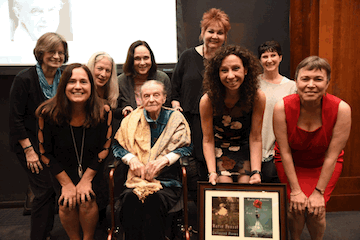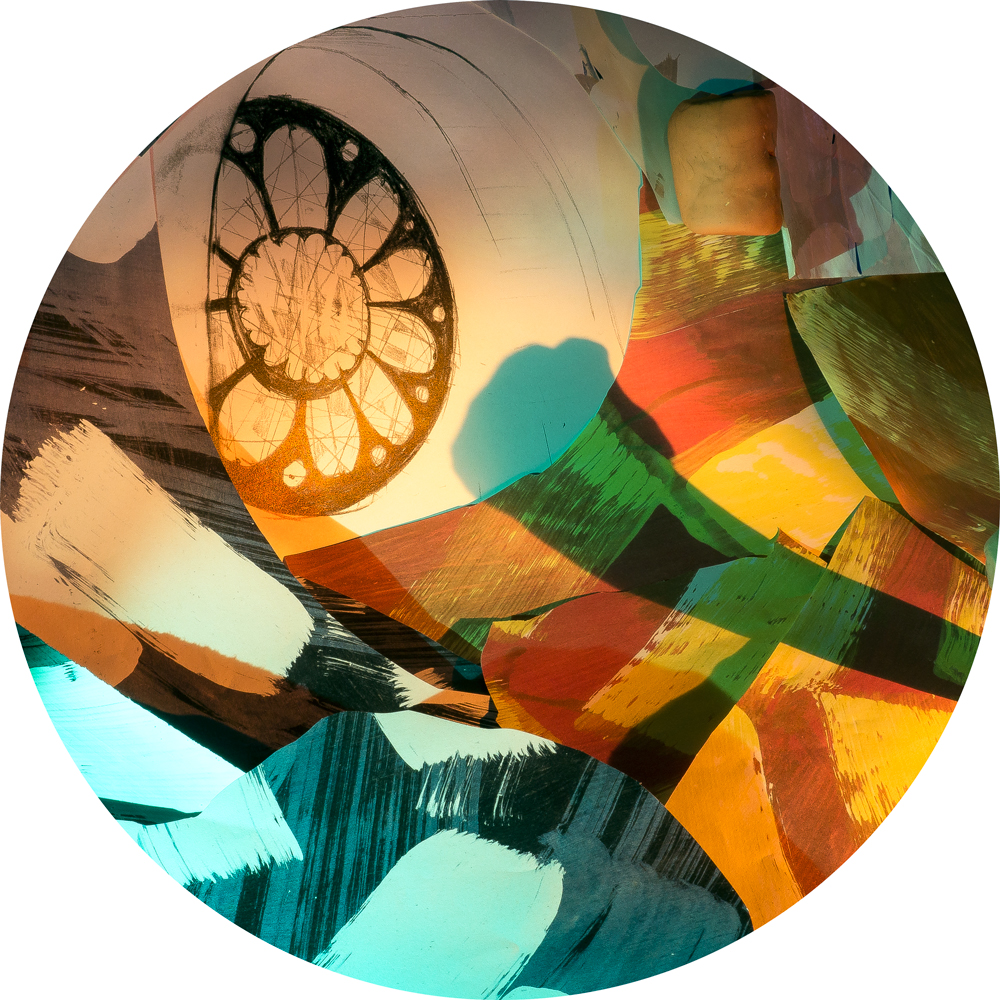elcome to Mezzo Cammin, a web journal devoted to formal poetry by women. Publishing twice a year, Mezzo Cammin features poems in form by contemporary women writers; reviews of new books by and about women poets who work in form; and essays that explore a variety of topics, ranging from the accomplishments of a
particular poet, to the possibilities of a particular form and the history and
politics of canonization. Our journal aims not only to promote the
work of contemporary women poets, but also to expose readers to formal
poetry by women poets who may once have been well-known, but whose
writing may now be difficult to find due to its lack of inclusion in
anthologies, books falling out of print, and the tendency that still
persists in academia of choosing the work of male poets to define a
given era or literary style.
 |
 Our journal aims not only to promote the
work of contemporary women poets, but also to expose readers to formal
poetry by women poets who may once have been well-known, but whose
writing may now be difficult to find. Our journal aims not only to promote the
work of contemporary women poets, but also to expose readers to formal
poetry by women poets who may once have been well-known, but whose
writing may now be difficult to find.
|
|
 |
We will therefore devote the essays
section once a year to celebrating the achievement of a woman poet
whose work deserves wider recognition. We are also starting a women poets timeline, known as "The
Timeline Project," which will eventually be the largest database devoted
to women's poetry in the world. We welcome suggestions concerning
this timeline as well as contributions to it.
Our journal's title, Mezzo Cammin, derives most recognizably from the
opening line of Dante's Inferno; more immediately, however, we borrow
it from "Mezzo Cammin" by Judith Moffett (who, in
turn, derived her title and theme from Longfellow as well as from
Dante). Moffett's satirical, twenty-three stanza poem about reaching
middle age inspires not only through her dexterity in working with
rhyme and meter, but leads us to hope, as well, that controversies
about how to define "form" have, at last, ripened to middle age. We
at Mezzo Cammin therefore expect to take a middle path in our
understanding of form by not limiting our definition to "poems written
in rhyme, traditional stanza forms, and conventional rhyme and meter."
Although such poems will likely predominate in the journal,
especially in its early issues, we encourage submissions of poetry,
essays, and reviews in which form is understood more liberally, as
encompassing a repeatable pattern, of any sort, within a poem.
In particular, we believe that women poets, as literary outsiders, have through the centuries been adept at playing with form; a tendency which, as in the case of Emily Dickinson, has sometimes led their work to be viewed skeptically, if at all, by the literary mainstream. At Mezzo Cammin, we hope to explore the variety of formal approaches taken by women writers and to recognize that "experimentation" in poetry is not limited to free verse, but flourishes equally well through poets' innovative handling of forms of repetition.
|
|
 |
 |
| ADVISORY BOARD & STAFF |
Advisory Board
Debra Bruce
Annie Finch
Allison Joseph
Marilyn Nelson
Molly Peacock
Kathrine Varnes
Staff
Kim Bridgford, Editor
Anna M. Evans, Design & Technical Editor
|
|
|
 |
 |
The most recent addition to The Mezzo Cammin Women Poets Timeline is Rosa Newmarch by Jean L. Kreiling.
Marie Ponsot was presented with a Lifetime Achievement Award at the Celebration of the Timeline reaching 75 essays, Lincoln Center, Fordham University (Sponsored by Fordham's Curran Center) Friday, October 20th, 2017.
Charlotte Innes is the recipient of the 2018 Mezzo Cammin Scholarship to the Poetry by the Sea conference.
|
|
|
 |
|
|
|
 |
| Rachael Gorchov: Recently I completed a body of work that focused on the landscapes that define suburban office and industrial complexes, contemplating their subtle relationships with the history of landscape painting. When looking at these places I saw English landscape gardens – orchestrated nature that gave way to picturesque landscape painting. I documented my subjects onsite by drawing their reflections in a Claude Glass, a convex black mirror popularized as an observation device in the 18th century. This tool appealed to me for how its skews and bulges its reflection, making my work highly subjective from the start. I then constructed paintings in the studio based on these drawings. The three-dimensional nature of my paintings further emphasized the forced perspective in my initial drawings and required viewers to explore the paintings much like they might explore a physical space by moving around, crouching and craning their necks.
Irregular versions of geometric forms such as cubes, parabolic curves, cones and triangles comprised the dimensional shapes of these pieces and eventually gave way to my working nearly exclusively on concave surfaces and ‘rocks with cast shadows.’ I settled on these structures for a few reasons. When a viewer stands directly in front of the concave works, irregular half-spheres with the convex side attached to the wall, the paintings fill their peripheral vision for an immersive experience. The rocks and shadows, amorphous objects paired with adhesive-backed prints, are reminiscent of portals and geologic abrasions. They invite viewers to question if the dimensional form is emerging from or entering into another space. Like in other works, these pieces frame the physical space the artworks inhabit.
In 2016, I visited Europe where I recognized parallels between the interiors of Renaissance spaces and my own paintings, such as the power that foreshortening possesses in its ability to collapse and intensify space in cathedrals– similar to my Claude Glass works. This experience coincided with a visit to an exhibition in Vienna featuring renderings of synagogues that once stood in the city. This piqued an interest in contemplating architectural space in my work and prompted me to consider architectural language in my own Jewish cultural heritage. I then began a series of tondos, a Renaissance term for circular artworks, of European Jewish architecture.
Beginning with paintings and mixed-media, in these works I build a photographic image that engages the space wherever it is installed, becoming part of the architecture. I arrived at the tondo format through my own history of making non-rectangular paintings, and appreciate its relationship to reliefs and rose windows found in synagogues and cathedrals. In gathering source imagery, I rely heavily on documentation – photographs and engravings as most of these buildings have been destroyed. I contemplate the collective memory images of architectural space can reveal. In this spirit, this work depicts layered environments where scale, color and depth shift ambiguously, revealing experiential space.
I consistently begin works by looking at a particular subject because of an art historical or personal association, and then through a process of extracting details from their surroundings using an accumulation of marks, color and a tactility, I sacrifice specificity of form and place, ultimately revealing a specificity of experience as my subject.
|
|
|
|
|
|
 |
|
 |
|
|
|
|
